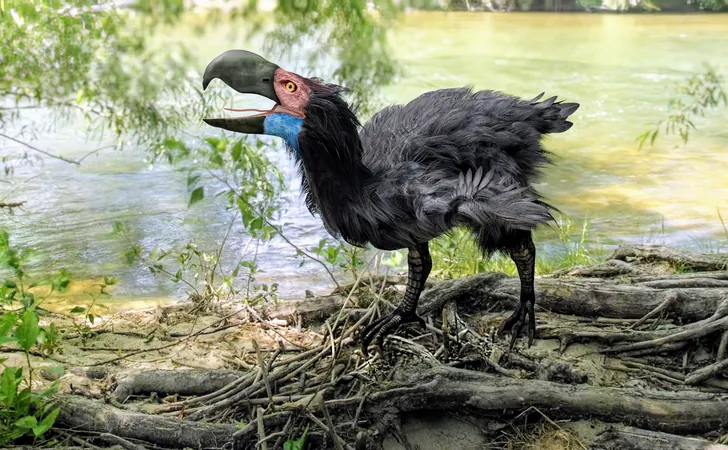
Uncovering the Mysteries of the "Terror Bird": A Powerful Predator from Ancient Times
2024-11-07
Author: Sophie
What Were Phorusrhacids?
Phorusrhacids, colloquially known as "terror birds," were formidable, flightless carnivores that thrived in South America from approximately 60 million to 2 million years ago. These awe-inspiring birds could reach heights of up to 10 feet, wielding massive, hooked beaks and powerful legs designed for impressive sprints—aptly placing them at the top of the food chain in their ecosystems. Feasting primarily on small to medium-sized animals, these predators utilized their speed and lethal beaks to hunt effectively, which led some scientists to theorize that they may have occasionally hunted in packs, a fascinating yet debated concept.
A Clue from the Past: A Leg Bone Fossil
At the heart of this discovery is a leg bone from the Miocene epoch, which dates back around 12 million years. Dr. Siobhán Cooke, an associate professor of functional anatomy and evolution at Johns Hopkins University, highlighted that this bone possibly belonged to the largest known terror bird, exceeding other species in size by an impressive 5 to 20 percent. Remarkably, this leg bone shows evidence of past interactions, featuring peculiar deep pits typical of Phorusrhacids and potential tooth marks from a formidable prehistoric caiman, Purussaurus. This grim evidence suggests a fatal encounter with a reptilian adversary that might have led to the bird’s demise.
Expanding the Reach of Phorusrhacids
The fossil's discovery—located as far north as Colombia—enriches our understanding of where terror birds could be found, previously considered mainly to inhabit Argentina and Uruguay. The new geographical evidence indicates that these birds once thrived in a diverse ecosystem, dramatically different from today’s landscapes. The ancient environment of the Tatacoa Desert was a lively habitat filled with primates, gigantic ground sloths, and massive armadillo-like creatures, showcasing an extraordinary array of now-extinct animals cohabiting the Earth.
The Legacy of the Terror Bird
Not only does this find elevate our understanding of ancient ecosystems, but it also provides insights into apex predator evolution. With their specialized adaptations—strong legs for speed and sharp beaks for hunting—terror birds played a critical role in the Miocene food chains, similar to the roles filled by today’s large cats and raptors. Understanding the evolutionary trajectory of these birds may unveil broader insights about how apex predators adapt to changing environments, shedding light on past ecological dynamics.
More Discoveries Await
This remarkable fossil, potentially among the largest terror bird remains ever found, signals a promising horizon for future paleontological endeavors in Colombia and beyond. Although the region isn’t typically recognized for fossil discoveries, this latest find illustrates its potential for revealing more about the Earth's rich prehistoric past. Researchers are enthusiastic about ongoing explorations that may uncover additional terror bird remains and other fascinating fossilized life forms, enhancing our comprehension of life during the Miocene epoch.
Following this latest discovery, the scientific community remains optimistic that ongoing research and advancements in fossil identification will lead to further revelations concerning these ancient predators, ultimately enriching our understanding of everything from their behaviors to their ecosystem dynamics. This significant find not only invites us to admire the incredible biodiversity that existed millions of years ago but also encourages us to appreciate the ever-evolving narrative of life on Earth. The terror bird’s story is both a fascinating chapter in evolutionary history and a poignant reminder of the magnificent creatures that once roamed our planet.









 Brasil (PT)
Brasil (PT)
 Canada (EN)
Canada (EN)
 Chile (ES)
Chile (ES)
 España (ES)
España (ES)
 France (FR)
France (FR)
 Hong Kong (EN)
Hong Kong (EN)
 Italia (IT)
Italia (IT)
 日本 (JA)
日本 (JA)
 Magyarország (HU)
Magyarország (HU)
 Norge (NO)
Norge (NO)
 Polska (PL)
Polska (PL)
 Schweiz (DE)
Schweiz (DE)
 Singapore (EN)
Singapore (EN)
 Sverige (SV)
Sverige (SV)
 Suomi (FI)
Suomi (FI)
 Türkiye (TR)
Türkiye (TR)